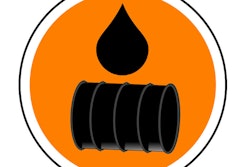In an article published in SPIE's Journal of Applied Remote Sensing, researchers announce that optical remote sensing observations may provide close estimates of relative oil thickness/volume for large oil slicks in the ocean captured by satellites. This is a critical scientific advancement for monitoring large-scale oil spills using operational civilian satellites, according to Journal of Applied Remote Sensing associate editor, Weilin "Will" Hou, that will ultimately increase our ability to assess and understand the impact of oil spills on marine and coastal resources, as well as our ability to prepare appropriate responses for future spills.
The open-access article, "Remote Sensing Estimation of Surface Oil Volume During the 2010 Deepwater Horizon Oil Blowout in the Gulf of Mexico: Scaling up AVIRIS Observation with MODIS Measurements," suggests that optical remote sensing observations from coarse-resolution satellite instruments can estimate the thickness and volume of large oil slicks in the vast ocean when some fine-resolution aircraft measurements are available: the combined measurements of two NASA satellite instruments (MODIS on Terra and Aqua) and one NASA airborne instrument (AVIRIS) resulted in maps that revealed surface oil volume, relative oil thickness, and probable distributions of the various thicknesses for the northern Gulf of Mexico.
"This research comes from a stellar team of scientists. It is the result of great collaborations amongst universities, government agencies, and industry," says Hou. "The lead article author, Chuanmin Hu, is a top researcher on ocean monitoring and remote sensing; another author, Rebecca Green, is a well-known expert in the federal government when it comes to oil-spill monitoring and impact assessment. The work this team produced has the potential of very important environmental, economic, and social impact for us: the more accurately we can assess the volume of oil spills at synoptic scale, the better we can plan mitigation efforts for future spills, and the better we can assess how such spills affect our marine and coastal communities and environments, in order to best apply our resources."
The article authors are Chuanmin Hu, Lian Feng, and Frank Muller-Karger of the University of Florida's College of Marine Science; Jamie Holmes of Abt Associates; Gregg A Swayze of the U.S. Geological Survey, Crustal Geophysics and Geochemistry Science Center; Ira Leifer and Christopher Melton of Bubbleology Research International; Oscar Garcia of Watermapping; Ian MacDonald of Florida State University's Earth Ocean and Atmospheric Science Department; Mark Hess of Ocean Imaging; George Graettinger of NOAA Ocean Service; and Rebecca Green of the Bureau of Ocean Energy Managements.
(Source: SPIE - International Society for Optics and Photonics)






















